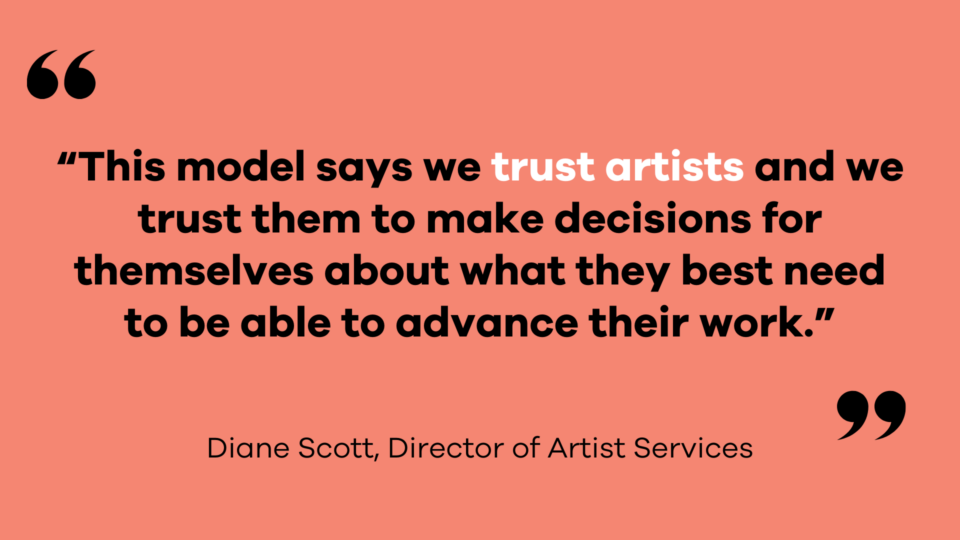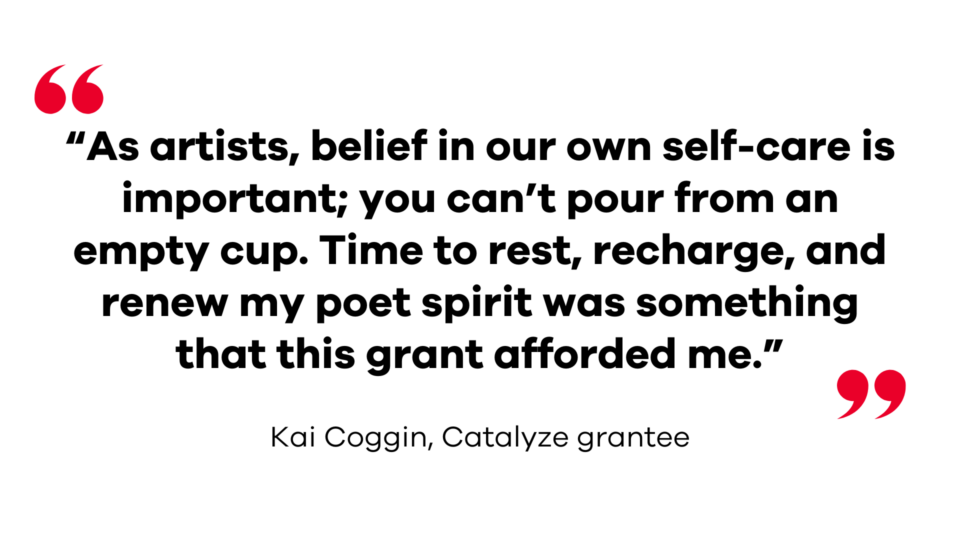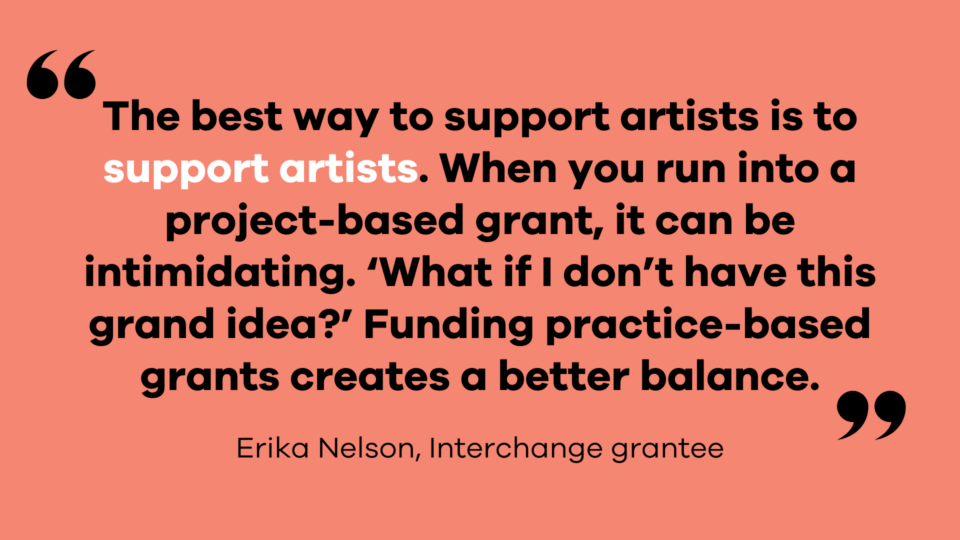Trust Artists: The Shift to Practice-Based Grants
By Elizabeth Snell
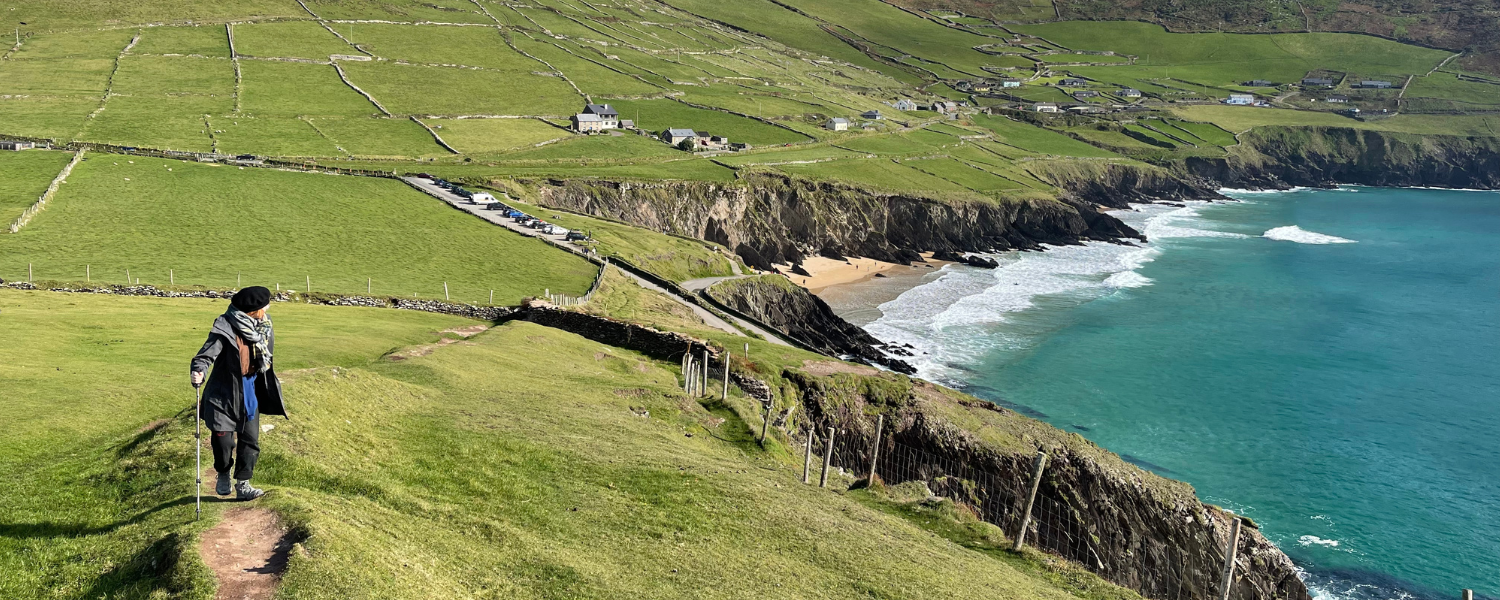
Photography: M-AAA Catalyze grantee Jennifer Perren.
The landscape of funding for artists is changing. And this is good news.
A paradigm shift is underway, possibly in credit to the COVID-19 pandemic. Across the philanthropic sector, practice-based grants, also called trust-based or unrestricted grants, are gaining popularity—and are starting to take hold in the arts. Funding for artists is moving toward these practice-based grants, and it’s been gaining traction here at Mid-America Arts Alliance (M-AAA).
Project-Based Grants vs. Practice Based Grants
Traditionally, artists have sought funding through project-based grants, where their proposals are crafted around specific art projects delivered in a set timeframe. Project-based grants, or restricted grants, support artists as they bring a particular and defined vision to life. Grant funds can only be used to accomplish the project set forth in the grant proposal, but not to fund regular expenses, like studio rent or other expenses that contribute to an artist’s overall practice.
Practice-based grants, however, offer a model for deeper, more meaningful support that puts trust and confidence in artists’ ability to determine how to allocate funds in support of their practice.
Practice-based funding is reshaping the way artists receive financial support to foster more holistic support to help artists achieve their long-term goals.
A Funding Approach That Trusts Artists: What We Know, What We’ve Learned, What’s Next
We asked two members of M-AAA’s artist services team to weigh in on what practice-based grants are, what kinds of activities they can support, and how this shift in artist funding will impact the arts ecosystem.
Please meet Diane Scott, director of artist services programming, and Kyle Mullins, artist services program officer at Mid-America Arts Alliance.
Read why Diane and Kyle are so excited about this shift and what M-AAA has learned along the way.
Kyle Mullins: Diane, can you elaborate on the difference between practice-based funding and traditional methods of funding artists?
Diane Scott: Usually grants given to artists are fairly transactional. They’re project-based. So, an artist proposes a project and gives a grant budget and then, a funder gives money to create the project. It really is paying for a particular piece or body of work to be developed.
But practice-based grants are grants that are given to artists to support their overall practice. That includes everything—what they need to be able to make their work. This includes many needs such as large equipment, travel, childcare, research, and health insurance—all without it being specifically tied to an end product.
Diane: What are some of the examples that you’ve seen from this, Kyle?
Kyle: Well, I think what’s really exciting to me is just the absolute breadth of options that folks can spend this sort of funding on. All of these things that artists need for their creative practice that are not funded by traditional methods of philanthropy can be funded under the umbrella of a practice-based grant.
Diane: I’ve just had a couple of really interesting conversations with artists. One of them is an artist who works in installation. So she needs space. She has to have large spaces to even be able to design and create this work in. She has to be able to cover those costs, including paying for the high heating and cooling costs. With this grant, that is a valid expense.
Practice-based funding gives artists the resources that they can self-determine what they need. It varies super widely.
Kyle: This really opens the door to move forward as an artist and try new things and really incorporate some risk and experimentation into your practice.
“It’s been an interesting conversation to convince artists that we are willing to invest in them as people over any sort of output or product. And it’s almost like supporting the general operating costs of a human being.” — Kyle Mullins
Diane: Just having that freedom and the necessary means to create, it’s huge. Or, even just the security knowing that you have emergency funds in the bank—you have less to worry about—is huge.
Kyle: What spurred the transition to practice-based funding in the artist services division at Mid-America Arts Alliance?
Diane: People were experimenting in practice-based or trust-based funding prior to COVID, but COVID really impacted the trajectory.
During COVID, many of the nation’s arts funders very generously gave away millions and millions of dollars to individual artists. There wasn’t time to go through this whole rigmarole of submitting projects and reports—who knew where they were going to be or if certain projects were even possible [because of gathering restrictions].
“So, funders made these practice-based grants to artists, and what they found is that the results were so much better. . . . Artists really took this money and used it super effectively. Artists ended up actually creating more work as a result.” — Diane Scott
We had basically a big, large-scale experiment going on where we could really see the power of giving artists unrestricted funding. It was so wildly successful that it has pushed a lot of people to really rethink their grant making practices.
I’m super proud of the work that Mid- America Arts Alliance has done in the region to move our direct funding to artists toward that direction.
Kyle: Do you have any advice for artists as they put together applications for practice-based funding and how that is different from selling a project for a potential grant?
Diane: Usually in these grant applications, we ask you to describe your current practice and what kind of challenges have you been facing in continuing that practice. Then, how might you direct those funds in a way that’s strategic to help you address those particular challenges.
Kyle: I have to remind artists, you don’t have to have a project. Artists will still ask “but what if my project takes place in . . . “—this shift to practice-based funding can be hard for artists to get used to. It’s so hard to convince ourselves as artists that someone might even trust us to decide what happens with the money.
We at M-AAA are still in the process of educating the artists that we work with, and we are approaching this in a new way. Even when we’re holding information sessions or if I’m speaking with artists as they put together their applications, I hear a lot of difficulty in changing their own framing to know that we are interested in funding them as an artist as opposed to an output or a product that they’re putting out.
And so I think there’s a lot of work that we still need to do across the field to convince artists that they can share what their basic needs are.
Diane: And some of the very best projects are those projects that traverse decades. Because practice-based grants support the artist over a long duration, they can feed that freedom of artistic discovery and exploration.
Kyle: Where is this all going for us, Diane? What’s on the horizon, what are the goals with this work?
Diane: So to me, I’m always looking at how artists can have enduring practices, not thriving practices.
I mean, we want them to be thriving, but no practice is thriving all the time, but it needs to endure. The power is in the continuing of it and the continuing of it over a lifetime, over decades.
And so what do artists need to have enduring practices?
Well, we know that there’s a big hole for people in terms of the business end of it. So we’re working on training and professional development for those pieces through programs like Artist INC and Catalyze.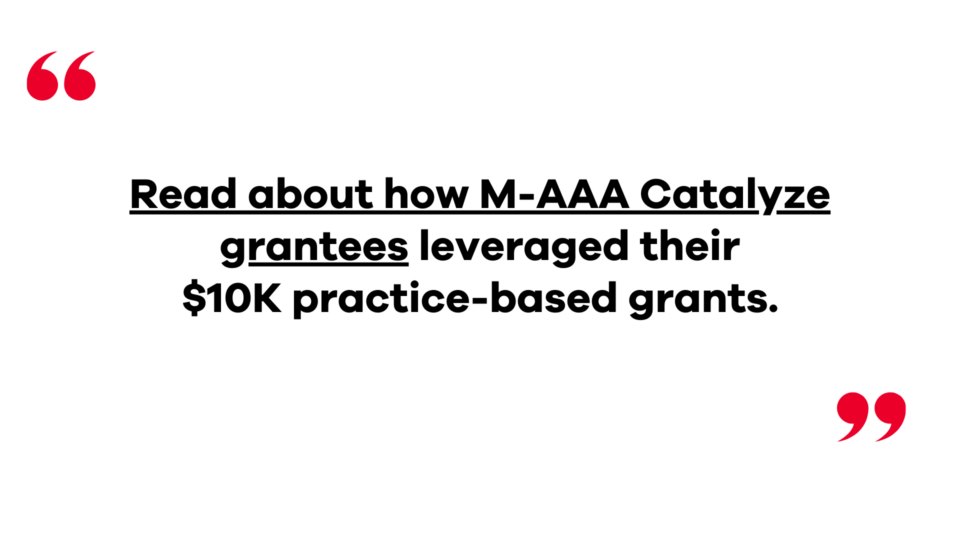
Of course, making good work and letting people know about it is key. Having strong networks of other artists is also a factor in long-term viability, which we currently do as well through our programs.
But some other things that we know that are really, really important are validation and also, money.
So all these years I’ve worked in the arts, and we’re societally conditioned to have certain ideas about who artists are and what that means. The validation that an individual artist gets in their own eyes and society’s eyes and in the eyes of their family when they win a $25,000 award is amazing.
We are fortunate that we’re going to give away close to a million dollars in practice-based grants in our next fiscal year to individual artists, but we still don’t have a broad geographic distribution of those. I’d like to see us have unrestricted individual artist grants or practice-based grants in every single state available to artists.
Kyle: How can organizations advocate that this is a really important method of supporting artists?
Diane: Sharing the powerful outcomes and the powerful stories of the individual artists who’ve been the beneficiary of practice-based grants.
Kyle: Also, we’re actually able to invest a lot more time into the actual relationships with the artists and with the funders as well. Rather than monitoring every little move, we’re able to really listen and have conversations and be a part of community building on a really broad scale.
Diane: It really is game changing.
M-AAA Artist Services programs with practice-based funding now include Artists 360, Catalyze, and Interchange.
Header photography: Jennifer Perren described her practice-based Catalyze grant as “life-changing!” She explored nature, focusing on a new body of ceramic work inspired by the colors, textures, and folklore she encountered during her travels. Photo courtesy of Jennifer Perren.


